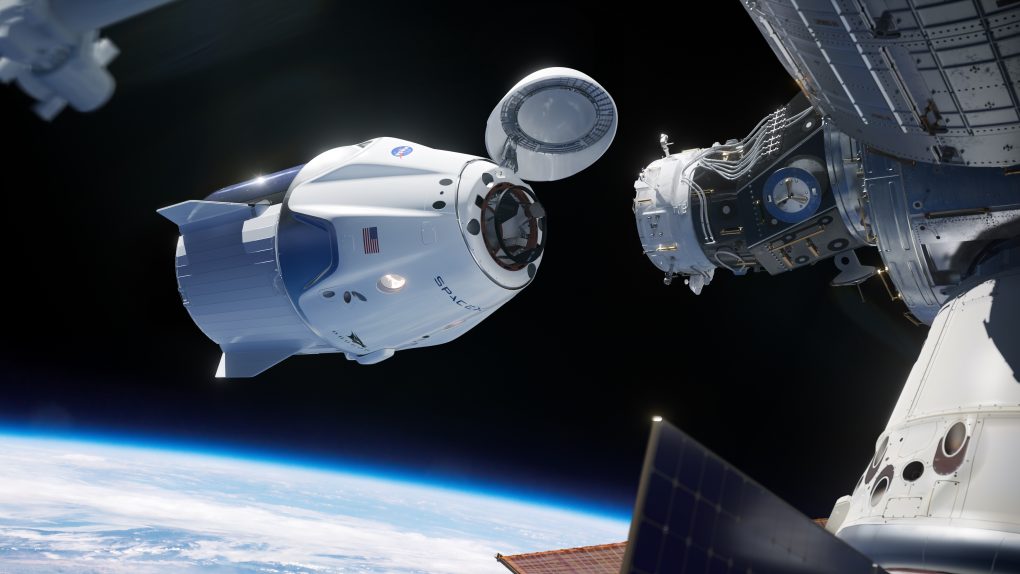- NASA is moving fast to plan new missions to the ISS using the SpaceX Crew Dragon spacecraft.
- Crew Dragon will be departing from the ISS soon, and NASA will then be able to certify it and use the hardware whenever it needs.
- There are currently two future Crew Dragon missions planned, one for later this year and the second for early 2021.
SpaceX’s Crew Dragon, the first spacecraft produced as part of NASA’s Commercial Crew program to actually carry astronauts into space, is still attached to the International Space Station today, but that’s not stopping the space agency from planning its future Crew Dragon missions. In an announcement today, NASA revealed the four-member crew of Crew-2, the third crewed flight of SpaceX’s high-tech capsule.
The mission, which is slated to launch sometime in the spring of 2021, will including NASA astronauts Shane Kimbrough and Megan McArthur as well as Akihiko Hoshide of the Japanese space program JAXA and ESA astronaut Thomas Pesquet. That’s double the number of passengers as NASA’s Demo-2 mission, and matches the number of astronauts that will be traveling to the ISS on Crew-1, the first operational Crew Dragon mission, planned for September.
This is essentially exactly what NASA had in mind when it launched the Commercial Crew program. It wanted (well, needed might be a better term) a way to send its astronauts into space at any time without relying on Russia’s Soyuz missions. NASA had been paying Russia for seats aboard its flights to the ISS, and while launching rockets from US soil is still a pricey endeavor, the Crew Dragon provides the space agency with much more flexibility to do what it wants.
NASA offers a brief preview of what the upcoming expedition will look like:
The Crew-2 astronauts will remain aboard the space station for approximately six months as expedition crew members, along with three crewmates who will launch via a Russian Soyuz spacecraft. The increase of the full space station crew complement to seven members – over the previous six – will allow NASA to effectively double the amount of science that can be conducted in space.
That’s a big deal for NASA, and now that the Crew Dragon is poised to make its first return to Earth, it seems clear that the space agency is planning on using its newfound freedom as often as possible.
Things might be even better for NASA if Boeing’s Starliner was performing better than it has in recent months. The troubled spacecraft has hit a number of bumps in its development and testing, with the most serious issue being a failed uncrewed test flight to the International Space Station that sparked an independent review of the entire Starliner program. Boeing will have another chance to fly its uncrewed mission before NASA sends astronauts to the space station for the Starliners final demo mission, but we may be waiting a while for that to happen.








